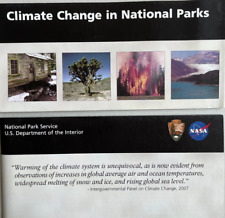
New modeling on the likelihood of how much hotter the Earth’s climate will get this century shows that without rapid action the problem will be twice as severe as previously estimated – and may be even worse. The study uses the Massachusetts Institute of Technology (MIT) Integrated Global Systems Model, a computer simulation of global economic activity and climate processes. The new research involved 400 runs of the model with each run using slight variations in input parameters, selected so that each run has about an equal probability of being correct based on present observations and knowledge. Previous models have estimated the probabilities of various outcomes based on variations in the physical response of the climate system itself, but the MIT model includes possible changes in human activities as well – such as the degree of economic growth, with its associated energy use, in different countries. .
The new projections, published this month in the American Meteorological Society’sJournal of Climate, indicate a median probability of surface warming of 5.2 degrees Celsius by 2100, with a 90 percent probability range of 3.5 to 7.4 degrees. This can be compared to a median projected increase in a 2003 study of just 2.4 degrees. The difference is caused by several factors. Among these are improved economic modeling and newer economic data showing less chance of low emissions than had been projected in the earlier scenarios. Other changes include accounting for the past masking of underlying warming by the cooling induced by 20th century volcanoes, and for emissions of soot, which can add to the warming effect.
While the outcomes in the “no policy” projections now look much worse than before, there is less change from previous work in the projected outcomes if strong policies are put in place now to drastically curb greenhouse gas emissions. Without action, “there is significantly more risk than we previously estimated,” Prinn says. “This increases the urgency for significant policy action.”
Worryingly, Prinn says the odds indicated by the new model may actually understate the problem, because the model does not fully incorporate other positive feedbacks that can occur. For example, increased temperatures may cause a large-scale melting of permafrost in arctic regions, with the subsequent release of large quantities of methane, a very potent greenhouse gas.
Prinn stresses that the computer models are built to match the known conditions, processes and past history of the relevant human and natural systems, and the researchers are therefore dependent on the accuracy of this current knowledge. Beyond this, “we do the research, and let the results fall where they may,” he says. Since there are so many uncertainties, especially with regard to what human beings will choose to do and how large the climate response will be, “we don’t pretend we can do it accurately. Instead, we do these 400 runs and look at the spread of the odds.”
Related:
Fires responsible for 20% of CO2 emissions
Dire new warning on climate from IPCC scientist
New DOE program aims to predict abrupt climate change
Missing Fallout Fuels Warming Fears


















Comments are closed.